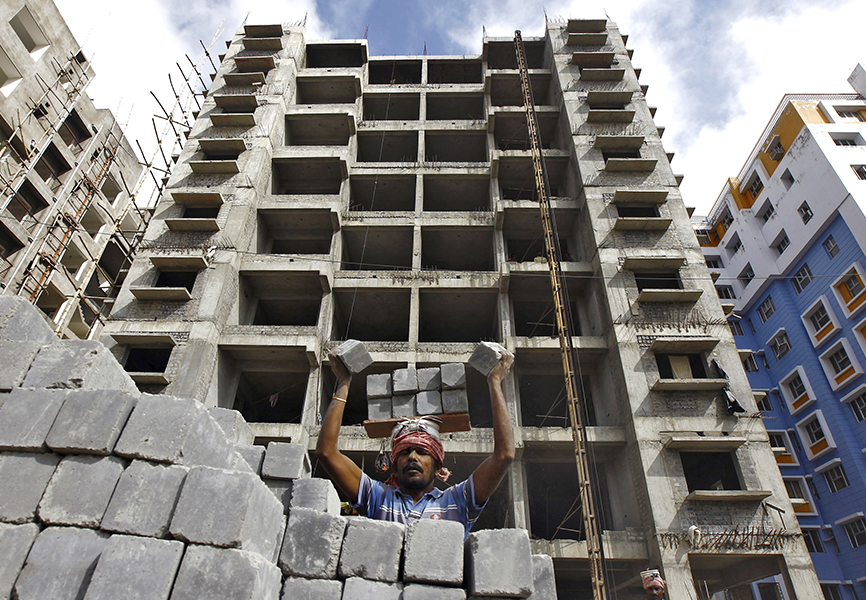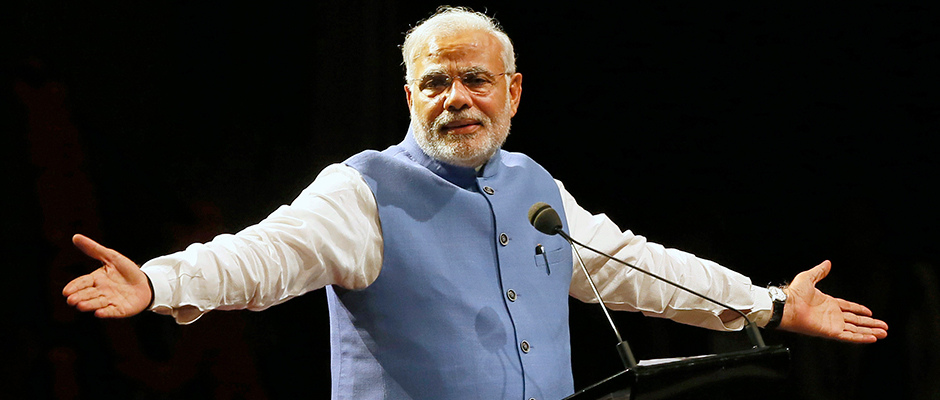It's budget season again, every India watcher's favorite time of year. For the general public, a budget release may not get much attention, but it is critical for one reason: it shows us where Prime Minister Narendra Modi's priorities will be in the coming months and years.
This year's budget is special in a few key ways: Its release was moved up by a month, it now also includes the enormous rail budget, and it combines 'plan' and 'non-plan' spending, a distinction which for years has made life difficult for us analysts! In short, this seemingly stale event actually marks the beginning of 'Modi 2.0,' (Or 'Modi 3.0,' depending on when your version of '1.0' began).
But then there are things that never change. Following Finance Minister Arun Jaitley's budget presentation in Parliament, opposition parties unsurprisingly attacked the government for being directionless and lacking vision. Rahul Gandhi went even further, saying it lacked “fireworks,” did nothing to create more jobs, and was a “damp squib."
The budget shows where Modi's priorities will be in the coming months and years.
Now, the budget may lack the fireworks that Rahul Gandhi is looking for, but for the sake of India's economy, budgets
should lack fireworks. In India's bygone era of socialist policies, centrally planned economy, and minimal acceptance for private sector activity, a budget was the only outlet for all industrial activity and growth. It has also been used as a vessel for political opportunism, like giveaways to the poor ahead of elections.
But as India increasingly liberalizes, there should be less focus on a budget, and correspondingly, less capacity to create fireworks. If budgets continue to have oversized importance, it gives the central government too much weight in economic matters. For India to truly liberalize, government and budgets need to reduce their foot print on the economy.
Fireworks aside, this budget is not short on vision.
Infrastructure continues to be the hallmark feature for Modi. At around USD 60 billion, funding for roads, rail, ports, and aviation are at an all-time high and they're one of the biggest spending provisions in the budget. Infrastructure spending in India is imperative for developing better transport systems and it is a job-creating vehicle capable of quickly growing the economy.
Infrastructure continues to be a hallmark feature for Modi.
Where are the jobs the opposition is asking for? Look no further than the USD 60 billion that will hopefully be augmented by additional private sector financing. The government recognizes that private investments have a limited effect on the economy at large, so the government must keep funding infrastructure to improve the lives of Indians and grow the economy. Compared to a time when scant money was spent on roads, spending this amount of money, and continuously focusing on infrastructure, is a welcome sign for the future direction of India's development.
Meanwhile, simultaneously cutting the fiscal deficit to 3.2% of GDP shows global investors that fiscal prudence is fashionable in North Block. Modi spent much of last year going around the world, courting investors, and telling them that prudent macro policies are important to his administration. Why? Because investors, the ones who were responsible for the foreign direct investments that have helped create the jobs that the opposition claims Modi does not address, care about trimmed deficits.
Cutting the deficit from last year's 3.5% of GDP reading is a really important step that should not be overlooked for what it signals in the years ahead. While there are a few traditional giveaways (ahem, MGNREGA), the government is largely restrained. Granted, they have not cut the deficit all the way down to 3.0%., but ahead of the state elections next month, Modi's budget pointedly resists the urge to keep the deficit unchanged from last year, or to widen it as a way to ramp up populist spending and earn political capital, as previous governments have done. This sense of restraint is worth appreciating because, if Modi can contain spending in a big election year, then fiscal discipline is here to stay.
Among other new elements of the budget, campaign finance has been addressed for the first time. The budget calls for capping single source donations, encouraging digital transfers to political parties, and introducing electoral bonds to add transparency as to the source of campaign funds.
If Modi can contain spending in a big election year, then fiscal discipline is here to stay.
It is unclear how these so-called electoral bonds will work, but the intent is clear. Modi is increasingly looking to clean up India's notoriously messy campaign finance and this is just the beginning. Coupled with the cap on large cash transactions for retail and efforts to increase the use of electronic payments indicate that more anti-corruption and transparency measures will be on the way.
So what is the overall vision and direction for Modi post this budget? He will continue to spend on infrastructure to grow the economy. Simultaneously, he will maintain fiscal prudence to appease investors.
Beyond that, anti-corruption and governance will become increasingly important. Campaigning on a “development agenda” is so “2014;” Going after the corrupt is what sells today. With 2019 elections not too far away, this budget shows us that rather than using the exchequer to win votes through populist spending, Modi 2.0 will market himself as a corruption crusader.
Contrary to what the critics say, the budget has a vision and direction, one that we will be seeing a whole lot more of in the months and years to come. It may just not be a vision that the opposition agrees with.
Click
here for more analysis by Shailesh Kumar.

 Rupak De Chowdhuri / Reuters
Rupak De Chowdhuri / Reuters
